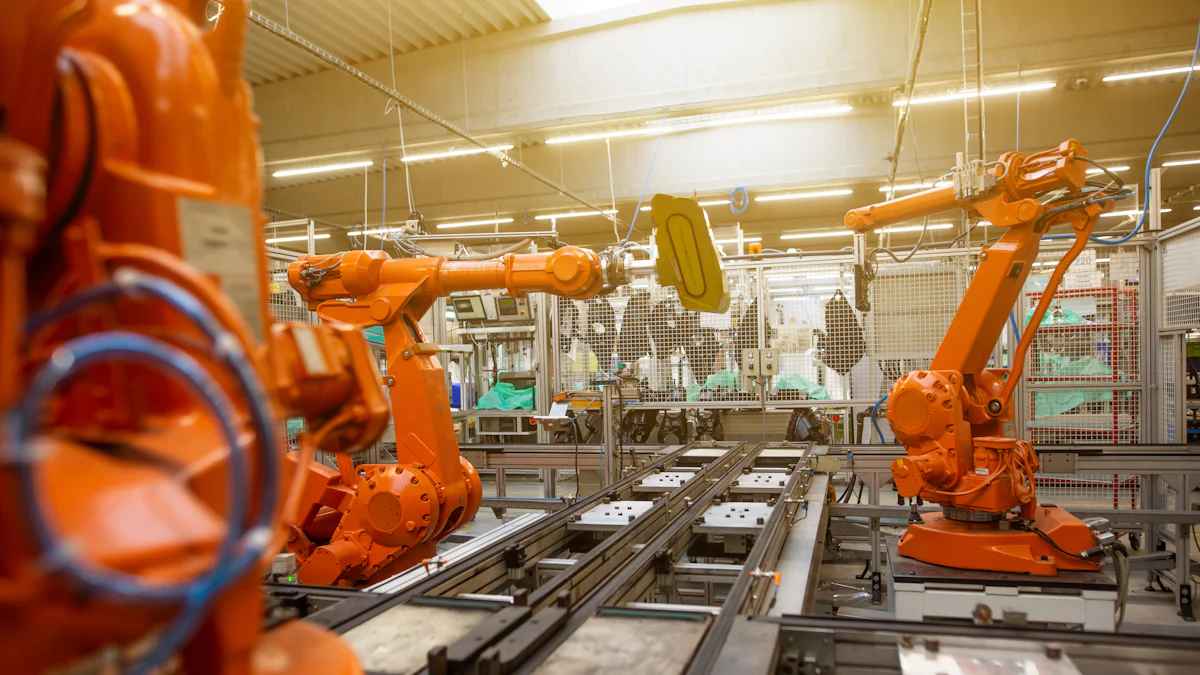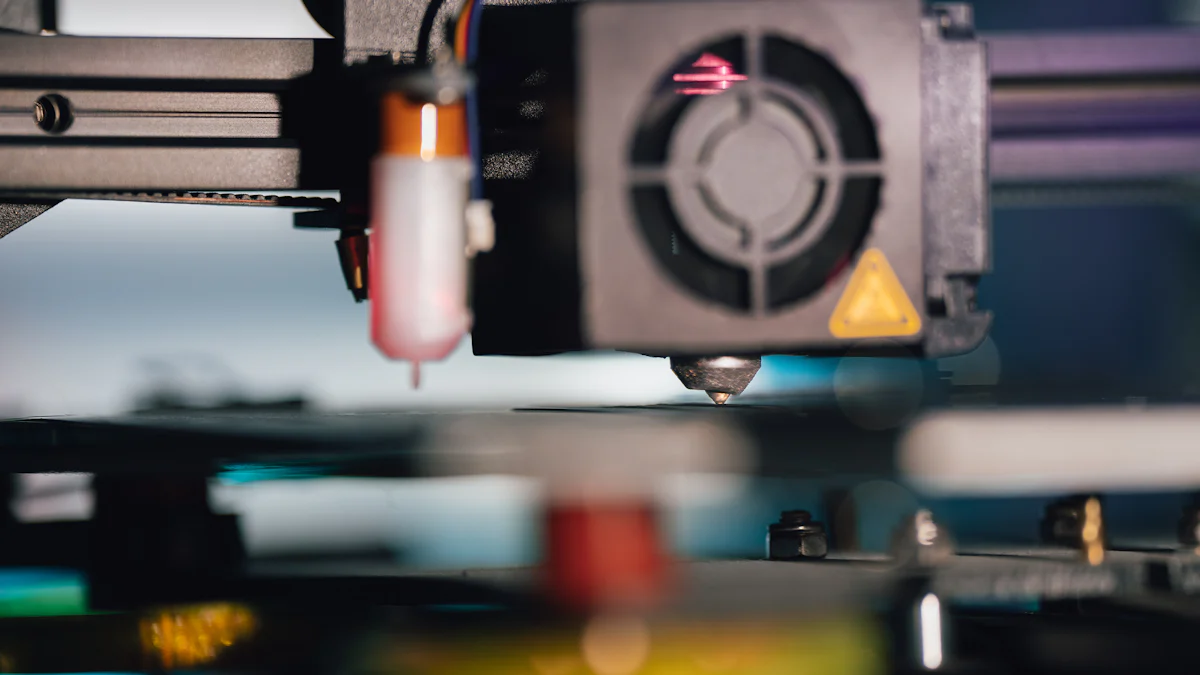2024 Manufacturing Technology Trends to Watch

Staying updated with manufacturing technology trends holds paramount importance for industry leaders. The rapid pace of technological advancements continues to reshape the manufacturing landscape. The year 2024 stands out as a pivotal period for the emergence of new technologies. Industry reports indicate that top manufacturers are investing heavily in digital capabilities and data-driven processes to enhance efficiency and innovation. This trend underscores the necessity for businesses to adapt and integrate cutting-edge technologies to remain competitive.
Emerging Manufacturing Technology Trends

Automation and Robotics
Advanced Robotics
Advanced robotics continues to revolutionize manufacturing technology. Leading manufacturers invest in sophisticated robotic systems to enhance production efficiency. These robots perform complex tasks with precision and speed, reducing human error. Companies deploy collaborative robots, or cobots, to work alongside human workers. Cobots improve safety and productivity on the factory floor. The integration of advanced robotics helps manufacturers address labor shortages and reduce operational costs.
AI and Machine Learning in Automation
Artificial intelligence (AI) and machine learning play crucial roles in automation. AI-powered systems analyze vast amounts of data to optimize manufacturing processes. Machine learning algorithms predict maintenance needs, preventing equipment failures. These technologies enable real-time decision-making, enhancing overall efficiency. Manufacturers use AI to automate quality control, ensuring consistent product standards. The adoption of AI and machine learning in automation drives innovation and competitiveness in the manufacturing industry.
Additive Manufacturing (3D Printing)
New Materials and Techniques
Additive manufacturing, commonly known as 3D printing, introduces new materials and techniques. Manufacturers experiment with advanced materials such as metal alloys and biocompatible polymers. These materials expand the range of applications for 3D printing. Innovative techniques like multi-material printing and high-speed sintering improve production capabilities. The development of new materials and techniques enhances the versatility and efficiency of additive manufacturing technology.
Applications in Production
3D printing finds diverse applications in production. Manufacturers use it for rapid prototyping, reducing development time for new products. Customization becomes feasible with 3D printing, allowing for tailored solutions. The technology supports small-batch production, minimizing waste and inventory costs. In aerospace and automotive industries, 3D printing produces lightweight components, improving fuel efficiency. The widespread adoption of additive manufacturing transforms traditional production methods.
Internet of Things (IoT) and Smart Factories
IoT-Enabled Devices
The Internet of Things (IoT) connects devices and systems within manufacturing environments. IoT-enabled devices collect and share data in real-time, providing valuable insights. Sensors monitor equipment performance, detecting anomalies early. This connectivity enhances predictive maintenance, reducing downtime. IoT devices streamline supply chain management by tracking inventory levels and optimizing logistics. The implementation of IoT-enabled devices boosts operational efficiency and productivity.
Smart Factory Integration
Smart factories represent the pinnacle of modern manufacturing technology. These factories integrate IoT, AI, and automation to create interconnected systems. Real-time data exchange between machines and systems enables seamless operations. Smart factories enhance flexibility, allowing for quick adjustments to production schedules. The integration of advanced technologies improves energy efficiency and sustainability. Smart factories set new standards for efficiency and innovation in the manufacturing industry.
Sustainable Manufacturing
Green Technologies
Green technologies play a crucial role in sustainable manufacturing. Manufacturers adopt renewable energy sources like solar and wind power to reduce carbon footprints. Energy-efficient machinery minimizes resource consumption, enhancing sustainability. Water recycling systems help conserve water in production processes. Eco-friendly materials replace traditional ones, reducing environmental impact. Companies implement waste management practices to recycle and reuse materials. Green technologies contribute to a cleaner and more sustainable manufacturing industry.
Circular Economy
The circular economy model transforms traditional manufacturing practices. This approach focuses on minimizing waste and maximizing resource efficiency. Manufacturers design products for longevity and recyclability. The use of recycled materials reduces the need for virgin resources. Companies implement take-back programs to reclaim used products. Remanufacturing processes restore old products to like-new condition. The circular economy promotes sustainability by creating a closed-loop system in manufacturing.
Advanced Materials
Nanomaterials
Nanomaterials revolutionize the manufacturing industry with their unique properties. These materials exhibit exceptional strength, lightweight characteristics, and enhanced electrical conductivity. Manufacturers use nanomaterials to create stronger and lighter components. In electronics, nanomaterials improve the performance of devices. Coatings with nanomaterials provide superior protection against corrosion and wear. The medical field benefits from nanomaterials in drug delivery systems. The integration of nanomaterials drives innovation across various manufacturing sectors.
Composite Materials
Composite materials combine two or more distinct substances to create superior products. These materials offer high strength-to-weight ratios, making them ideal for aerospace and automotive applications. Manufacturers use composites to produce lightweight and durable components. In construction, composite materials enhance the structural integrity of buildings. Sports equipment benefits from the improved performance of composite materials. The versatility of composites allows for their use in diverse industries. Composite materials continue to advance manufacturing capabilities and product quality.
Staying updated with manufacturing technology trends remains crucial for industry leaders. Emerging technologies like advanced robotics, AI, and 3D printing will significantly impact the manufacturing landscape. These innovations will enhance efficiency, reduce costs, and address labor shortages. Businesses should invest in digital capabilities and data-driven processes to prepare for these changes. Companies must adopt sustainable practices to remain competitive. Industry leaders should stay informed and adaptable to technological advancements.
See Also
5 Key Trends for Efficient Future Supply Chains
High-Tech Manufacturing: Warehouse Benefits of Automation
Dispelling Myths: Automation in High-Tech Manufacturing
